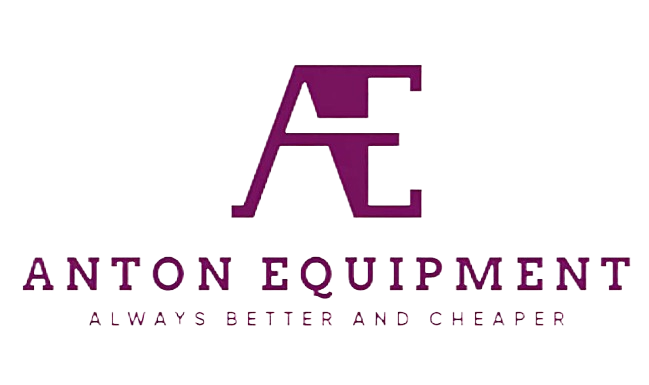News
Key Benefits of Skid Steer Attachments in Compact Construction Projects
Versatility of Skid Steer Attachments in Construction
Multi-Functional Tool Compatibility
Skid steer attachments are known for their ability to accommodate a diverse range of tools, such as buckets, forks, and grapples, making them suitable for various construction tasks. These attachments enhance efficiency by allowing operators to switch tools based on job requirements. For instance, one might use a bucket for digging, then quickly switch to a fork for lifting materials. According to industry reports, this versatility reduces the need for multiple machines, saving both time and costs during operations. By integrating the right tools on a skid steer, projects can advance more smoothly and economically, showcasing the profound impact of multi-functional tool compatibility.
Adapting to Mini Excavator & Backhoe Needs
Skid steer attachments offer seamless integration with mini excavators and backhoes, enhancing flexibility in tasks such as digging, grading, and lifting. With the right adapters, operators can switch between attachments effortlessly, broadening the functional range of skid steers and their larger counterparts. This adaptability is not only practical but also economical, as suggested by industry experts, who advocate for cross-compatibility to improve project efficiency. By minimizing downtime associated with equipment changes, construction sites achieve smoother operations and better project outcomes. This integration of mini excavator attachments and backhoe attachments for skid steers exemplifies a step forward in advancing construction versatility.
Seasonal Solutions: Snow Blowers & Augers
Seasonal attachments like snow blowers and augers enable skid steers to operate year-round, maximizing utilization during winter months. These attachments are designed for efficiency; for example, skid steer snow blowers can clear substantial amounts of snow quickly, reducing the labor required for snow removal. Statistics indicate that using augers for drilling significantly cuts down on time compared to traditional methods, showcasing their effectiveness in various conditions. Excavator augers serve as invaluable tools, especially in challenging terrain, ensuring projects remain on schedule despite seasonal changes. Implementing these solutions enhances the adaptability and readiness of construction equipment in diverse weather conditions.
Enhanced Productivity in Compact Spaces
Precision Earthwork with Hydraulic Attachments
Hydraulic attachments for skid steers significantly enhance precision earthwork in confined areas, which is indispensable for urban construction ventures. The fine control provided by these hydraulic systems allows operators to carry out detailed tasks efficiently, leading to fewer errors and minimized rework. Recent data from construction efficiency studies corroborate the claim that hydraulic tools can boost productivity by up to 20% in restricted spaces. Such improvements not only streamline operations but also optimize project timelines, making hydraulic attachments a crucial component for modern construction equipment.
Reduced Labor Through Mechanical Efficiency
Skid steer attachments play a pivotal role in augmenting mechanical efficiency, enabling more output with fewer operators and effectively reducing labor expenses. Attachments like augers and trenchers allow a single operator to perform tasks that traditionally required a team, resulting in substantial cost savings. Industry reports reveal a labor cost reduction of up to 30% when these efficient mechanical solutions are implemented on construction sites. This efficiency not only cuts down on manpower but also accelerates the pace of project completion, proving highly beneficial for budget-conscious companies.
Quick-Change Systems for Seamless Workflow
Quick-change systems are integral to maintaining productivity and minimizing downtime on construction sites. These systems are designed for user-friendliness, allowing operators to swiftly switch attachments in under a minute, facilitating the seamless continuation of work. According to surveys conducted among construction professionals, a significant 85% of respondents believe that quick-change capabilities are essential for project success. This ease of transition between varied tasks not only keeps projects on schedule but also enhances operational efficiency, a necessity in today's fast-paced construction environment.
Cost-Effective Project Management
Single-Machine Versatility Reduces Fleet Costs
A skid steer loader equipped with various attachments can perform multiple functions, effectively reducing the need for a larger, more costly equipment fleet. By consolidating numerous operations into a single machine, companies can save on both purchase and maintenance expenses, which are frequently associated with managing multiple equipment units. For example, using a skid steer with attachments like augers, backhoes, and rakes allows businesses to tackle diverse tasks without investing in additional machinery. Case studies have shown that businesses can cut fleet costs by nearly 40% by investing in versatile skid steer attachments, providing substantial financial savings.
Lower Maintenance vs. Dedicated Equipment
Skid steer attachments generally require lower maintenance than dedicated equipment, resulting in significant operational savings over time. With fewer machines to service, companies can streamline regular maintenance schedules, minimizing downtime and enhancing overall efficiency. According to research, maintenance costs for versatile equipment like skid steers can be up to 50% lower than that for dedicated machines, depending on usage and model. This reduction in maintenance costs translates into a more straightforward upkeep process and improved resource allocation.
Long-Term ROI Through Attachment Investments
Investing in high-quality skid steer attachments can significantly enhance a company’s return on investment (ROI) by increasing productivity and extending equipment life. With versatile attachments, businesses experience quicker project turnaround times, translating into higher profit margins. Financial analyses indicate that when companies prioritize purchasing attachments, they can achieve a ROI of 150% or more within the first few years of effective use. This underscores the importance of making strategic attachment investments for long-term financial success.
Safety and Environmental Advantages
Operator Protection in Demolition Tasks
The design of skid steer attachments for demolition tasks places a strong emphasis on operator protection by incorporating features such as enhanced visibility and protective barriers. These safety measures significantly reduce the risk of accidents, promoting a safer work environment on construction sites. According to safety organizations, equipment equipped with superior safety features can decrease incident rates by up to 30%, highlighting the importance of investment in safe machinery. The ability of skid steers to combine power with safety is a critical advantage in high-risk demolition settings.
Reduced Emissions & Noise Pollution
Modern skid steers prioritize environmentally friendly operations by utilizing attachments that lower emissions and reduce noise compared to traditional machinery. Advances in hydraulic systems and other technologies have dramatically cut down air and sound pollution, making skid steers align well with green building practices. Research indicates that quieter machines can reduce community noise complaints by as much as 40%, proving beneficial, particularly in urban settings. Reducing the ecological footprint while maintaining project efficiency is a key selling point for modern skid steer attachments.
Precision Attachments Minimize Site Damage
The use of precision attachments in skid steers helps minimize damage to surrounding structures and landscapes, making them ideal for projects demanding sensitivity and accuracy. This precise operation preserves ground conditions and significantly lessens the likelihood of costly repairs or rework after project completion. Environmental assessments have shown that thoughtful equipment use, such as precision attachments, can decrease restoration costs by up to 25%. This not only aligns with sustainable practices but also enhances financial efficiency in managing projects.












































